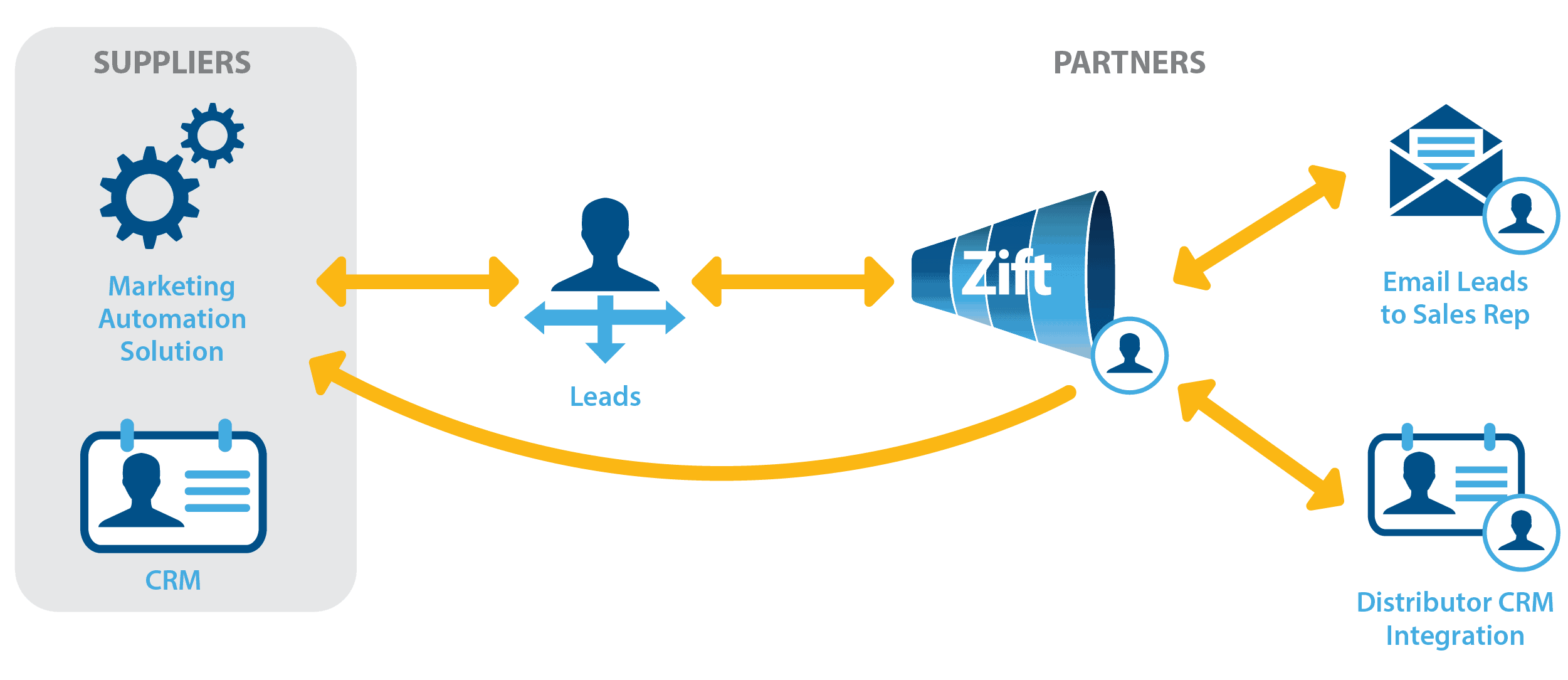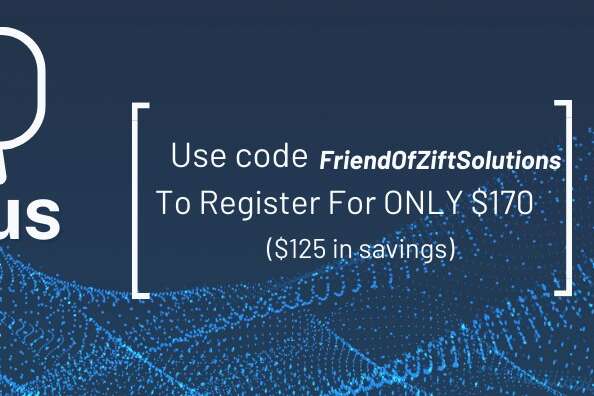Forward-thinking partner ecosystems and partner programs can edge out their competition by leveraging lead generation programs for qualified partners — both as a tool for partner recruitment and to increase the return on investment (ROI) in their indirect sales channel.
Partner access to lead generation programs is typically gated through a tiered framework in which partners must first meet specific criteria or sales thresholds. However, lead generation programs may also be part of partner training wherein new partners can get their feet wet through co-selling qualified leads.
Lead generation programs may be managed ad-hoc if limited to select partners but quickly becomes unwieldy when they need to scale to dozens or hundreds of partners. That scenario calls for a formal partner lead distribution program.
What Is a Partner Lead Distribution Program?
A partner lead distribution program is a process wherein a partner ecosystem manager strategically assigns individual end-customer leads to specific partner companies that are best suited to sell to or service them or, as noted earlier, have prequalified to receive leads.
What Are the Benefits of a Partner Lead Distribution Program?
A partner lead distribution program enables suppliers to:
- Boost Partner Program ROI – By delivering targeted leads to select partners, suppliers can drive a more predictable ROI from their indirect channels. Here’s how: By ensuring well-trained and high-performing partners handhold significant prospects, deals go smoother and close rates increase.
- Increase New Partner Recruitment – It’s no secret that recruiting productive partners has become more competitive over time, especially in the information and communications technology (ICT) channel, where commoditized solution providers beat the competition by throwing larger SPIFFs and promotions at their transacting partners. Of course, there’s a limit to how many Xs you can add to a SPIFF before deals become unprofitable. Typically, only larger companies with higher volumes of cash flow can handle an 8X or 10X SPIFF. One way to lure partner deals away from a larger competitor paying higher SPIFFs is to provide partners with qualified leads.
- Train New Partners During Onboarding – New partners need practice and assistance selling or deploying your solutions, especially if they’re venturing into a new vertical or technology type. Your program can rapidly advance your partner’s development by providing them with real-life opportunities to interact with qualified prospects in a co-selling motion during onboarding.
- Ingratiate New Partners – What better way to communicate your commitment to a partnership than dropping a potential deal into a new partner’s lap? An early win within the first couple of months of a new partnership creates positive momentum. Conversely, investing time in unproductive partnerships can prove frustrating for your partners and your C-Suite.
What Are the Steps to Creating a Partner Lead Distribution Program?
A partner lead distribution program is an ongoing, iterative process that involves acquiring, qualifying, scoring and distributing leads.
Step 1: Acquire Leads
Entire books have been written on how to generate end-customer leads, but for this article, we’ll simply categorize lead acquisition into two major buckets — inbound and outbound.
- Inbound lead generation activities typically include search engine marketing (SEM), which consists of pay-per-click (PPC) advertising and search engine optimization (SEO) to attract visitors to your website. Website visitors have read your company blogs, watched your videos, listened to your podcasts and seen your organization mentioned in relevant industry publications. These visitors become leads by filling out lead capture forms on your site, engaging with chatbots, emailing the appropriate contacts and calling your company phone number to discuss engaging your services.
- All these lead-capturing methods enable you to gather contact information, including name, email address, phone number, company name, company size and location. This info is stored in your customer relationship management platform (CRM), which can be integrated with your partner relationship management platform (PRM).
- Outbound lead generation activities typically include sending email drip cadences, messaging prospects on LinkedIn and other social platforms and making outbound calls to:
- hot leads acquired from tradeshows
- warm leads from co-marketing efforts with ecosystem partners
- cold leads on target accounts from resources like ZoomInfo
Once your company has a base of interested end customer prospects, you’ll need to qualify them to ensure they’re the right fit for your solution set.
Step 2: Qualify Leads
Based on the information you’ve gathered on each lead, you’ll need to assess if they’re serviceable by your company.
For example, an Internet access provider that only offers services in the United States can quickly rule out a prospect that needs Internet services in the rest of the world. In contrast, a cybersecurity provider that offers a customized solution that must work within an existing tech stack may need to set up an initial consultation to further qualify leads by asking about their specific needs, budget and timelines.
Once the leads have been qualified as serviceable, you’ll need to score these leads.
Step 3: Score Leads
Lead scoring is assigning a numerical value to each lead your company generates. Scoring leads help your marketing teams prioritize the leads, engage appropriately and hand them off to qualified partners in your ecosystem.
Develop a scoring system with your ecosystem’s partner types in mind. A prospect may be an excellent fit for your solution set, but that doesn’t necessarily mean they’ll be an ideal fit for all of your ecosystem partners. You can score leads based on multiple factors, such as:
- Fit – Is the lead in the right region for your partner? The right industry? The proper role to be purchasing the solution?
- Interest – How engaged has the lead been with your online content? Have they reached out in the past, but it wasn’t the right time to deploy your solution?
- New Business vs. Upsell – Upselling an existing customer may be an easier close. However, determining whether to engage may be influenced by different behaviors than for prospects. For example, rather than looking at website visits and engagement with your content as you would with a prospect, you might assess a customer’s support tickets, engagement during onboarding and use of your current products or services.
Lead scoring can vary based on the type of data you collect from leads interacting with your company:
- Demographic Information – If your company only sells to specific buyer personas, like a CIO, CTO or IT director, and one of those positions fills out a form, the lead score will increase. If the lead is inside your service area but is interested in a type of service available only in a particular geography, their score would decrease. If the form-fill on the site includes optional fields filled out correctly, the lead score may increase.
- Company Information – Your company may be more inclined to service customers of a specific size, type or industry. The more they fit into your ideal customer profile (ICP), the higher the lead score.
- Online Behavior – How leads interact with your site can help gauge their interest in your solutions and where they might be in their buying journey. For example, if they frequently visit your pricing page, they may be actively comparing your plan levels to competitors, potentially indicating a buying state. A site visitor who fills out a form requesting a consultation or a quote will score higher than a visitor who fills out a form to download an eBook or subscribe to a newsletter.
- Email Engagement – Measuring prospects’ email open and click-through rates can help your team determine those who are most engaged and more likely to close. The more click-throughs and emails opened, the higher the lead score.
- Social Engagement – Similar to email engagement, look at which prospects clicked through from organic and paid social media to your site and engagement with your company content on those platforms.
Step 4: Distribute Leads
Once the leads have been scored, they’re ready to send to your partners. Not so fast! First, you must figure out how to distribute which leads to which partners. You have several options to choose from. The most common lead distribution models include the following:
- Round robin – A round robin evenly distributes leads across the entire partner base without tiering or criteria-based screening. Newer programs or programs without strict parameters for lead distribution may opt for this model as it’s technically the most equitable and “fair” model for all partners involved.
- Cherry-pick – A cherry-pick method involves distributing all leads to a shared resource for qualified partners to pick the leads they want out of an established pool. Lead quantity and deal size parameters must be set to ensure equity between qualified partners.
- Regional – A region-based or territory-based model involves segmenting and distributing leads to partners based on their location within a given country. For example, a lead based out of Boston, Massachusetts, would be assigned to a partner based in the northeastern United States. This method is particularly useful for solutions that require in-person visits to deploy. In an ecosystem model, you could also involve multiple in-region partners in the deal, one to nurture the sale and another to install the solution.
- Vertical – An industry-based or vertical-based model is similar to a region-based model, except it includes partners with specific industry expertise or who meet particular compliance requirements to serve specific leads. For example, a healthcare lead may be sent to a partner who is educated in HIPAA requirements and can deploy HIPAA-compliant solutions. Similarly, a retail sector lead may be sent to a partner educated in PCI compliance and deploys PCI-certified solutions.
- Top performer – A top performer model distributes leads to partners based entirely on merit, such as attributed revenue for transacting partners or influenced revenue for non-transacting partners. Deployment partners may be offered projects based on the number of error-free installations completed. This model has the added benefit of only sending leads to partners who have earned them based on prior performance, which maximizes the ROI on your lead generation efforts.
- Shotgun – In a shotgun model, partners are pre-evaluated based on strengths, skills and experience, factoring in their partner type. Right-fit leads are then shared among like partners on a first-come, first-served basis. Like the top performer model, this has the benefit of being merit-based while adding an element of competition for the best opportunities.
- Hybrid – A hybrid model incorporates various strategies to meet your ecosystem’s goals. So, for example, if a key benefit of joining your program is guaranteed lead distribution to all partners, then you’ll select a round-robin model. However, you might also set up a select tier that receives leads following the top-performer model to maximize ROI. So, in this example, your program will deliver leads to all partners, reserving the best leads for partners most likely to close them.
What Software Enables a Partner Lead Distribution Program?
Partner relationship management (PRM) software platforms help automate partner lead distribution management. PRMs automatically assign and distribute qualified leads through email notifications and integrations into partner CRM platforms. As a result, partners get data such as lead profile information (name, company, etc.) and lead history (campaign, emails opened/clicked, website views, etc.) to help them easily and quickly engage. And providers get a complete picture of the sales lifecycle for each lead they distribute.
Looking for a PRM with automated partner lead distribution management?
Lead Distribution Management from ZiftONE enables your partner program to:
- Deliver leads via email or partners’ CRMs, such as Salesforce, Microsoft Dynamics, Oracle, SugarCRM, Sage and more
- Enable visibility and tracking across the entire lead lifecycle
- Speed and strengthen follow-up with deeper prospect data
- Easily see and share feedback, track lead activities and measure results with automated closed-loop reporting
- Leverage Zift’s Through Partner Marketing Automation (TCMA) to help partners nurture warm leads until they’re ready for sales

If you’re considering getting started with PRM software, you should know there’s never been a better time to do so. Think about this: automated partner lead distribution management enables efficiency. The more efficient your channel program’s processes are, the more likely you are to see a return on investment in it. You can do more with less. Let the power of PRM achieve better results and pay for itself.



